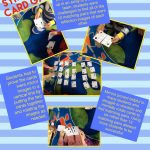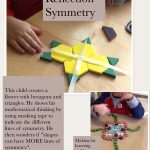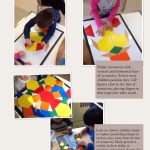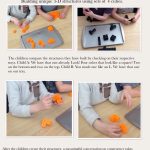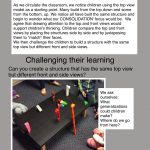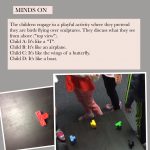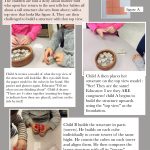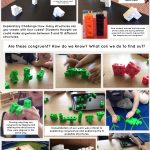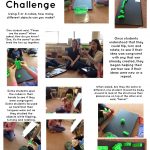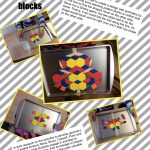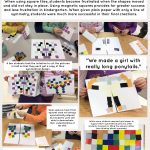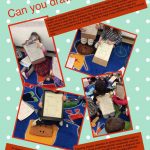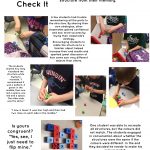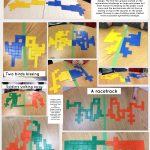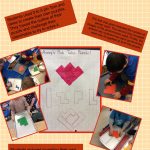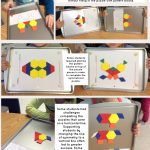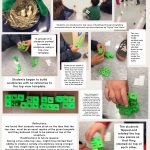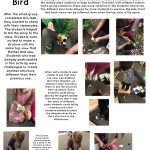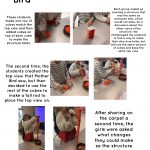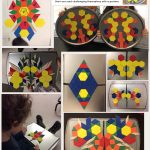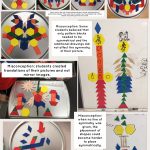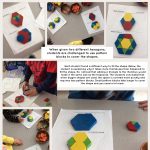We read the book Taking Shape: Activities to Develop Geometric and Spatial Thinking Grades K-2 by Joan Moss and Catherine Bruce. Our goal was to deepen our understanding of spatial reasoning in early childhood, from a constructivist approach to learning. As we implemented different strategies from the text, we focused on asking intentional questions to respond, challenge and extend children’s learning. Throughout our research project, children investigated and practised skills and concepts by means of an inquiry, play-based stance. Children and educators’ thinking was made visible via pedagogical documentation.
Team Members
Kelly Muir
Toronto District School Board
Karen Bunting
Toronto District School Board
Karen MacGregror
Halton District School Board
Mariela Perez Carranza
Toronto District School Board
Professional Learning Goals
- All group members felt that we gained a deeper understanding of spatial reasoning after implementing the tasks in Taking Shape
- Connections between the current research on spatial reasoning and the full-day kindergarten document were evident in the math behaviours and problem-solving and innovating curricular frames
- Using the activities outlined in Taking Shape, we were able to provide rich problem-solving and developmentally appropriate tasks consistent with the inquiry, play-based full-day kindergarten program
- The days that we had to co-teach in each other’s classrooms allowed us to challenge student learning and construct their understanding (e.g., make generalizations) by means of intentional questioning
- The pedagogical documentation that was created using iPads allowed us to make student and teacher learning visible
- At most schools, sharing ongoing tasks as well as the overall achievements of the project were well-received and several colleagues expressed an interest in borrowing the text as using the materials prepared to try activities with their students after witnessing the positive impact these tasks had on student learning
Activities and Resources
- Met on a monthly basis after school to discuss readings/researched related to spatial reasoning and to share reflections based on activities completed in the classroom from the book, Taking Shape
- Participated in co-planning meetings related to two guided lessons based on two lessons from the resource, Taking Shape. The Cube Challenge (Lesson 1 of Composing, Decomposing and Transforming Two-Dimensional Shapes, p. 149) and Mother Bird Finds a Sculpture (Lesson 1 of Perspective Taking, p. 217)
- Created a shared Google Drive with team members to share our findings and work based on tasks completed in the book
- Used iPads to document our research and share our findings through apps including Pic Collage, SeeSaw and Google Drive
- Created documentation panels in the classroom to share student learning
- Co-taught lessons in each of the team member’s classroom and debriefed as a team to discuss findings, challenges, modifications to future lessons and extensions
- RESOURCE: Taking Shape: Activities to develop Geometric and Spatial Thinking Grades K-2
- RESOURCE: FDK Programme Document 2016
- RESOURCE: Paying Attention to Spatial Reasoning (http://www.edu.gov.on.ca/eng/literacynumeracy/LNSPayingAttention.pdf)
- RESOURCE: The Robertson Program: Inquiry-Based Teaching in Mathematics and Science: https://wordpress.oise.utoronto.ca/robertson/
Unexpected Challenges
- When students were using non-magnetic materials (i.e., tiles) some became frustrated as they moved when bumped and did not stay exactly as placed. More magnetic materials would have relieved some frustrations.
- Not all students were excited or interested with every activity (more enjoyment on different days)
- Due to timing and classroom challenges, we were unable to submit a proposal to OAME
- Being from different boards, securing accurate information on how to use release time was hard to find and navigate, even determining cost of supply teachers differed within the same board
- Not all colleagues at our individual schools were interested in hearing the project results, so sharing our learning with all school staff was not possible
Enhancing Student Learning and Development
- Use of read alouds, puppets and dramatization of activities increased student engagement and created a more authentic purpose to the learning
- Helped develop student mathematical vocabulary through hands-on tasks and modelling of language throughout activities and in reflections
- Used key questions to draw student attention to what was happening, what they noticed, how things are the same or different, and to challenge and extend their thinking
- Recognizing gestures as an important form of communication when explaining their understanding of a concept or task
- Provided multiple opportunities for students to practise visualizing and verbalizing their visualization, as research shows that when children relate a whole shape to another familiar object it can reduce the task’s cognitive demand (Taking Shape, p. 222)
- Consolidation of big ideas was keys in developing next steps and determining student understanding or misconceptions
Sharing
- One group member is holding a half-day professional development session at her school for kindergarten to Grade 3 teachers, where she will share some of our research, activities, photos and findings
- Sharing at Kindergarten Division Meetings
- Informal sharing of activities and resources with colleagues (i.e., principals, ECEs, Grade 1 and 2 teachers)
Project Evaluation
Taking Shape was an excellent resource for building spatial thinking skills with all students. The book was user friendly, easy to implement, and provided high interest activities that fit well within the full-day kindergarten program. The multiple entry points, as well as the extension and variations provided in each lessons, provided educators opportunities to meet all students needs and levels. We found that students were more engaged when using magnetic manipulatives as they had more control and success over the movement of materials. In future we would like to provide students with more magnetic materials in order to eliminate frustration. We were excited to find that the research provided throughout the resource was aligned to the new full-day kindergarten curriculum and embedded within multiple strands.
The opportunity to co-plan and co-teach lessons was immensely beneficial to our learning of spatial reasoning in full-day kindergarten. Reflecting as a team on the lessons we taught and/or observed in each other’s classroom provided us with deeper insight into student understanding, thought process, and next steps for our learners. Debriefing also provided the educators with new perspectives on how to reach our learners and how to create more effective questions to build on student learning. After thorough reflection of our project, we agreed that the time spent in each other’s classroom was more valuable than the resources purchased. Capturing student learning on the iPads through apps such as SeeSaw and Pic Collage enabled us to connect student learning to home and to our project. Being able to capture moments in an instant and immediately share findings with the group by viewing photos together, strengthened student understanding. We were able to create documentation panels that consolidated the learning and allowed students to revisit their learning. The ability to have critical friends, provide instant feedback on student learning, and the delivery of a planned lesson were invaluable to our growth as educators.
Resources Used
Article – Paying Attention to Spatial Reasoning
Source: Literacy Numeracy Secretariat
http://www.edu.gov.on.ca/eng/literacynumeracy/LNSPayingAttention.pdf
Website – The Robertson Program: Inquiry-Based Teaching in Mathematics and Science
Resource – Taking Shape: Activities to develop Geometric and Spatial Thinking Grades K-2
Author: Joan Moss, Catherine D. Bruce, Bev Caswell, Tara Flynn, Zachary Hawes
Publisher: Pearson Canada
Document – The Kindergarten Program 2016
Resource – Pedagogical Documentation in Early Childhood
Author: Susan Stacey
Resources Created
These resources will open in your browser in a new tab, or be downloaded to your computer.


